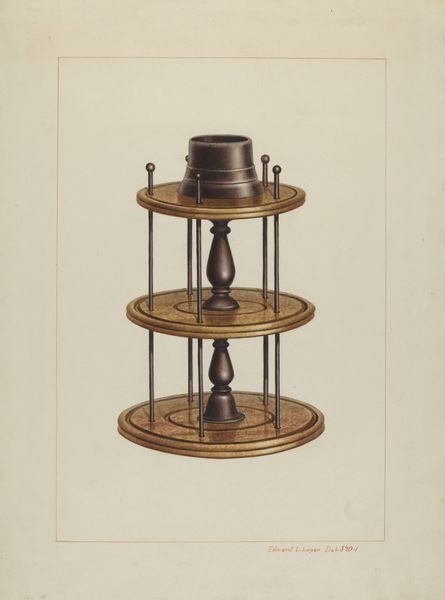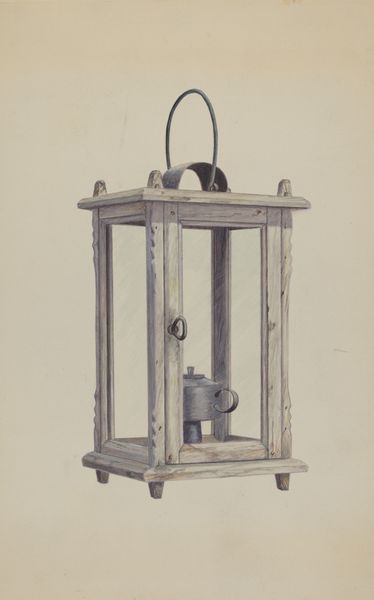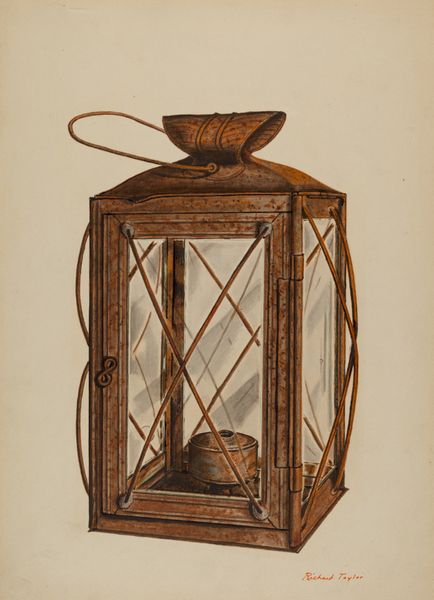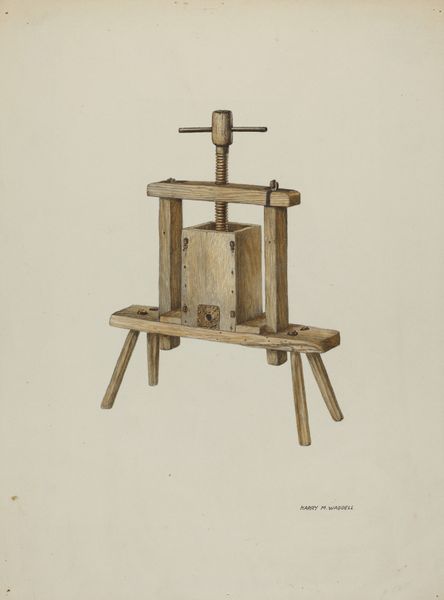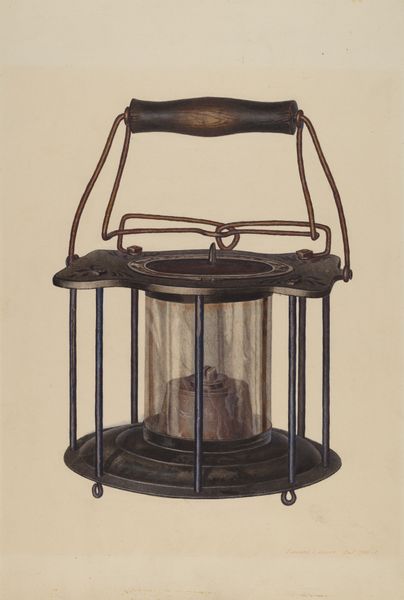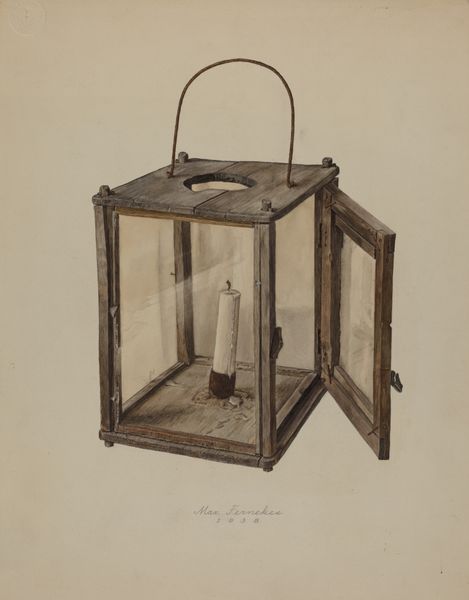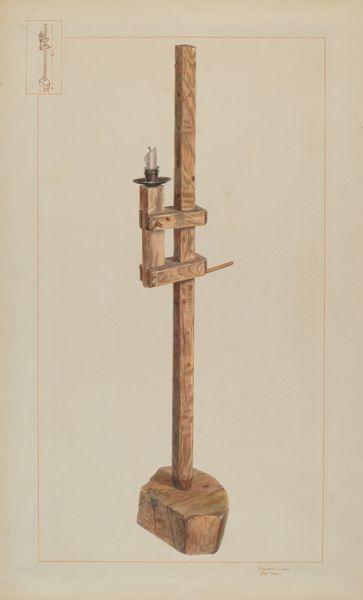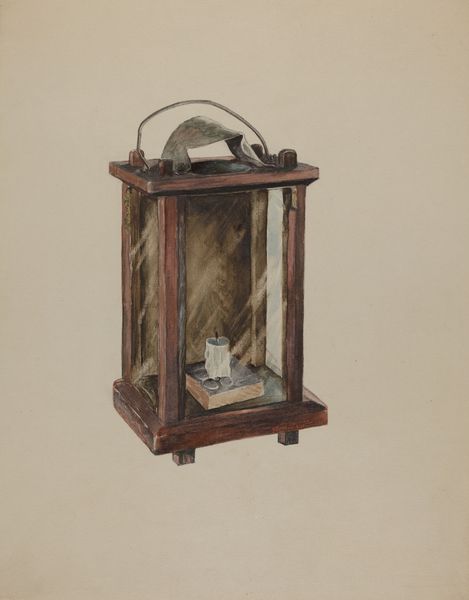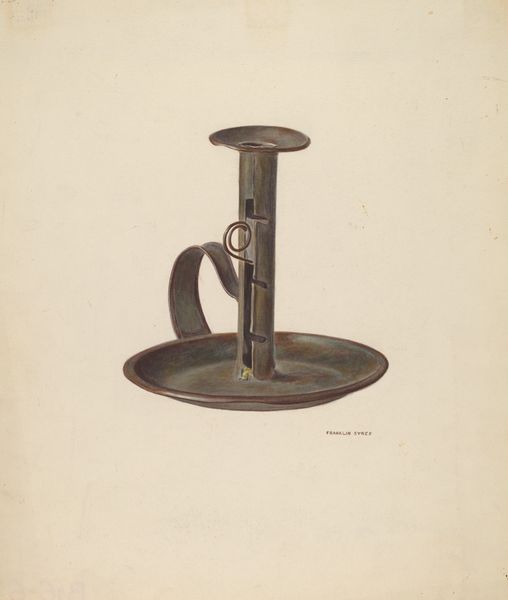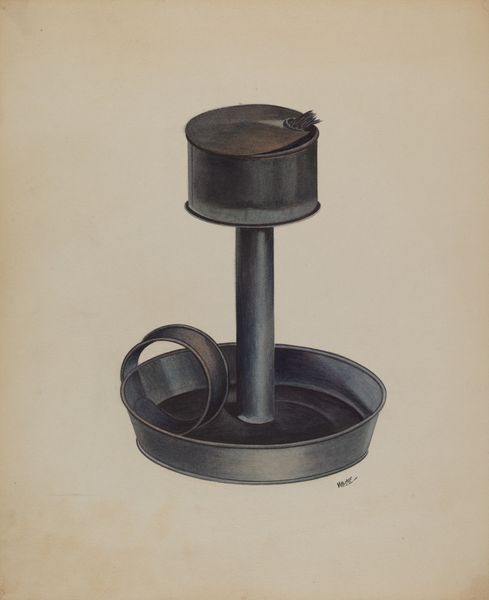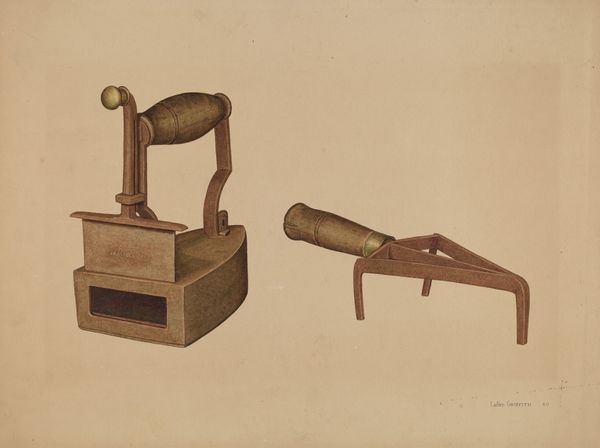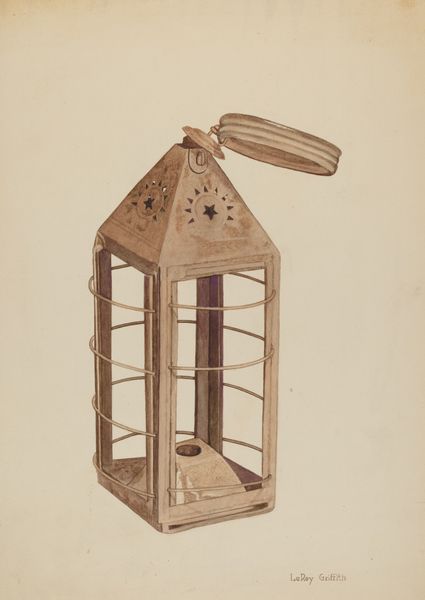
drawing
#
drawing
#
aged paper
#
toned paper
#
charcoal drawing
#
possibly oil pastel
#
oil painting
#
prop product design
#
underpainting
#
watercolour illustration
#
mechanical engineering model
#
watercolor
Dimensions: overall: 31 x 23.4 cm (12 3/16 x 9 3/16 in.) Original IAD Object: 5 3/4" high; 5 1/4" in diameter
Copyright: National Gallery of Art: CC0 1.0
Editor: Here we have Charles Garjian's "Spool Rack," from around 1939, done with watercolor and perhaps some oil pastel on aged paper. It’s quite charming in its depiction of such a utilitarian object. What stands out to you most about this piece? Curator: I'm immediately drawn to the social context. It’s not simply a rendering; it’s a record of labor and the means of production. Consider the materiality: the wooden spool rack, a handcrafted object, rendered in what appears to be mass-produced paper and commercial pigments. Does that tension interest you? Editor: Absolutely! The contrast between the handmade rack and the manufactured art supplies is striking. It makes you think about accessibility to art making at that time. Was Garjian making a statement by depicting such a commonplace object? Curator: Precisely! Consider the era. 1939 was the cusp of enormous shifts in manufacturing and consumption. Was he celebrating the utility and simple design of the rack, or perhaps lamenting its potential obsolescence in a world increasingly dominated by mass production? Think of the wood itself; consider its source and journey. Editor: It’s fascinating to think about the materials beyond just their aesthetic qualities. Looking at the construction of the rack, the way the dowels are fitted, it almost feels like looking at an engineer's blueprint rather than an idealized still life. Curator: Yes, the labor embedded within is paramount. The drawing isn’t just *of* something, it points *to* a whole chain of production and use, reminding us that even the most humble object has a rich material history. Editor: I hadn’t considered that this could be more than just an interesting design study. It brings up the connection between art, labor and material culture of that era. Curator: Indeed. By focusing on these aspects, we can really excavate deeper meanings from the image. We started with charm and now have something far more profound.
Comments
No comments
Be the first to comment and join the conversation on the ultimate creative platform.
